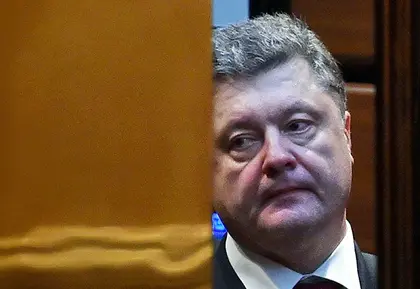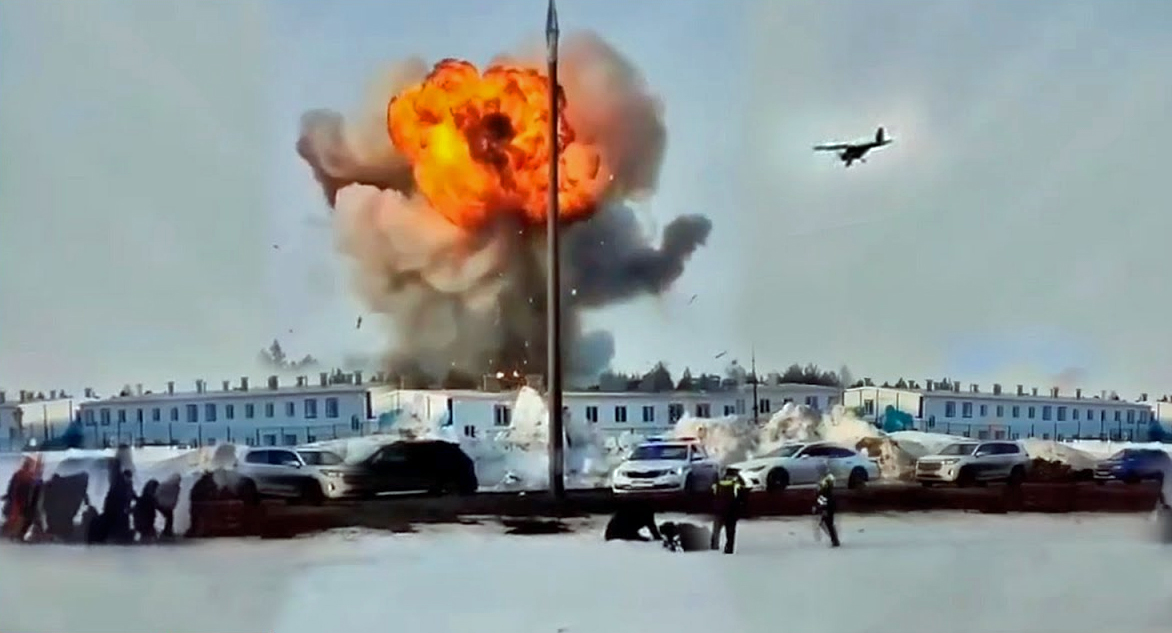The Minsk II peace agreement reached in February, in critical condition from the start, may have taken its dying breath on June 3. Russian-separatist forces launched a renewed assault on the western Donetsk suburb of Maryinka, discarding hopes for a durable peace in eastern Ukraine.
World leaders condemned Russia for what Ukrainian Prime Minister Arseniy Yatsenyuk described as the Kremlin “ordering its terrorists” to wage new attacks on Ukrainian forces.
JOIN US ON TELEGRAM
Follow our coverage of the war on the @Kyivpost_official.
Ukrainian President Petro Poroshenko went further on June 4, warning of a possible “full-scale” Russian invasion but assuring the nation it will be able to defend itself. The president also told Parliament he will not discard the Minsk accords and he refused to declare a state of war.

At least five Ukrainian troops were killed and 39 were wounded in the all-day battle along the 450-kilometer (280-mile) front line, which began when nearly 1,000 Russian-separatist forces attempted to surround Ukrainian soldiers in and seize more territory.
Taking the city and Krasnohorivka north of it would create a “choke point” in Ukraine-held Pisky and Adviivka, north and northwest of Donetsk, according military commanders.
Ukraine’s General Staff redeployed withdrawn artillery to fight off the latest advance – de-facto admitting that it would respond to persistent Russian violations of the Minsk deal in kind.
World leaders keeping using diplomatic means, analysts said, despite the fact that Russia is using “peace” as a tool to conquer more territory. Kremlin forces now control more than half of the Donbas in Donetsk and Luhansk oblasts,, the president said.
The only alternative to diplomacy is declaring war on Russia – “and then there’d be no going back,” said Vitaly Bala, head of the Situations Modeling Agency think tank. “Any declaration of war would have to take place only if it would improve the situation in a number of areas, not just militarily. You have to consider the economic situation and international affairs as well. If it wouldn’t improve things in those areas, it would be counterproductive.”

Russian-separatist forces continue attacking Ukrainian positions along most of the 450-kilometer (280-mile) front line using artillery and tanks banned by the February Minsk peace agreements, as well as by multiple-rocket launch systems. A regimental-sized enemy force of up to 1,000 soldiers assaulted the western Donetsk suburb of Maryinka on June 3, supported by artillery, rocket fire and tanks. At least five Ukrainian soldiers were killed before the attack was repelled. Russia now controls more than half of the Donbas, or more than 26,608 square kilometers of land. Ukraine has lost control of 28 municipalities since Feb. 18, bringing the total number to 169 under Russian control. Ukraine also does not control 410 kilometers of its border with Russia. More than 6,400 people have been killed and 2.1 million uprooted from their homes in Russia’s 15-month-old war.
Kyiv is reluctant to declare a state of war because it would mean formally renouncing the Minsk truce that it has tried hard to obey, according to Bala.
Moscow feels no need to live up to any agreement. “Moscow’s violations of the original (September) Minsk ceasefire enabled it to take over 500 square kilometers of additional Ukrainian territory,” an Atlantic Council report stated in May.

A firefighter extinguishes a blaze at a market in Russian-controlled Donetsk after shelling between Ukrainian forces and Russian-separatist forces on June 3.
Ukraine has completely or partially lost control of 28 cities and towns since Feb. 18, three days after the latest cease-fire went into force, according to a Cabinet of Ministers resolution published on May 5. That brings the total number of municipalities under Russian control to 169.
The very public way in which Russia has disregarded the Minsk agreement prompted the U.S. State Department on June 3 to pledge to “raise the price” of new territorial acquisitions for Russia.
Russia’s latest stunt follows a pattern of earlier attacks meant to gain leverage over Ukraine in diplomatic talks, said Volodymyr Fesenko of the Penta Centre for Political Studies.
“Russia is acting very cynically and maliciously, launching these attacks to pressure Kyiv and then blaming it on Ukrainian forces to try and sway the international community. Publicly, they say ‘yes, we will cooperate, we want peace.’ But then they stab Ukraine in the back with these provocations,” Fesenko said.
At the same time, the attacks show that Russia wants Western sanctions removed, Fesenko said.
Russia has stepped up its belligerence on a range of other issues as well – hitting 89 Europeans with a travel ban and accusing Ukraine of downing the Malaysian Airlines MH17 flight in July. Russia also blamed Kyiv for the failure of recent peace talks involving Russian-led separatists on June 1.
“Yesterday, Russia broke up the meeting of the trilateral contact group, and today Russia ordered its terrorists to launch a military operation,” Yatsenyuk told journalists on June 2.
The meeting of the trilateral contact group – involving Ukraine, Russia and the Organization for Security and Cooperation in Europe – failed to take place, with Ukrainian media, citing anonymous sources, saying that Russia had left the negotiating table.
Irina Gerashchenko, Ukraine’s representative in the group, wrote on her Facebook page that the “negotiations were difficult. The Ukrainian side is rightfully and firmly defending Ukraine’s position. And not everybody likes that.”

From left, Russian President Vladimir Putin, German Chancellor Angela Merkel, French President Francois Hollande and Ukrainian President Petro Poroshenko arrive at the presidential residence in Minsk on Feb. 11 during a meeting aimed at halting a 10-month war in Ukraine where dozens were killed in the latest fighting.
The spike in fighting has come just ahead of the Group of Seven summit on June 7- 8, when Russia’s war against Ukraine will dominate the agenda.
Whatever Russian President Vladimir Putin’s aim, he is no longer concealing Russian involvement.
The brazenness is clear in a report by international monitors published on May 29, in which members of the OSCE’s mission to Ukraine reported seeing fighters wearing Russian military uniforms and military vehicles with Russian license plates in occupied parts of Donetsk.
Monitors “spoke to two women, both wearing military uniforms, with caps with the Russian Federation Armed Forces insignia. They said that they were from Kramatorsk. During the conversation with the two women a vehicle with Russian number plates stopped next to the OSCE vehicles and two armed men, similarly dressed, exited the car and ordered the women to stop the conversation with the SMM,” said the report published on May 29.
Perhaps more damning is the OSCE report published on June 3, which lays out all the evidence necessary to indicate the Russian-separatist forces launched the attack on Maryinka, and that they were not simply responding to an assault by Ukrainian forces.
The night before the offensive, monitors witnessed separatist forces moving heavy weaponry toward the area where fighting broke out, including banned battle tanks and heavy artillery, according to the report.
Monitors attempted to contact separatist leaders but “either they were unavailable or did not wish to speak” to the OSCE, the report said.
The attack on Maryinka has sparked fears that nearby towns are about to fall to the separatist forces, and local residents have described an atmosphere of sheer panic.
“The locals said (Kremlin-separatist Alexander) Zakharchenko would seize Krasnohorivka by 3 a.m. Civilians are streaming out with their bags. Firing just resumed again. The doors are shaking. Grads are being used. Mortars just came down with a bang. Nearby,” Oksana Chorna, a volunteer working with soldiers out east, wrote on her Facebook page.
“This will be the hardest night,” she sai. “Pray for the kids.”
You can also highlight the text and press Ctrl + Enter




